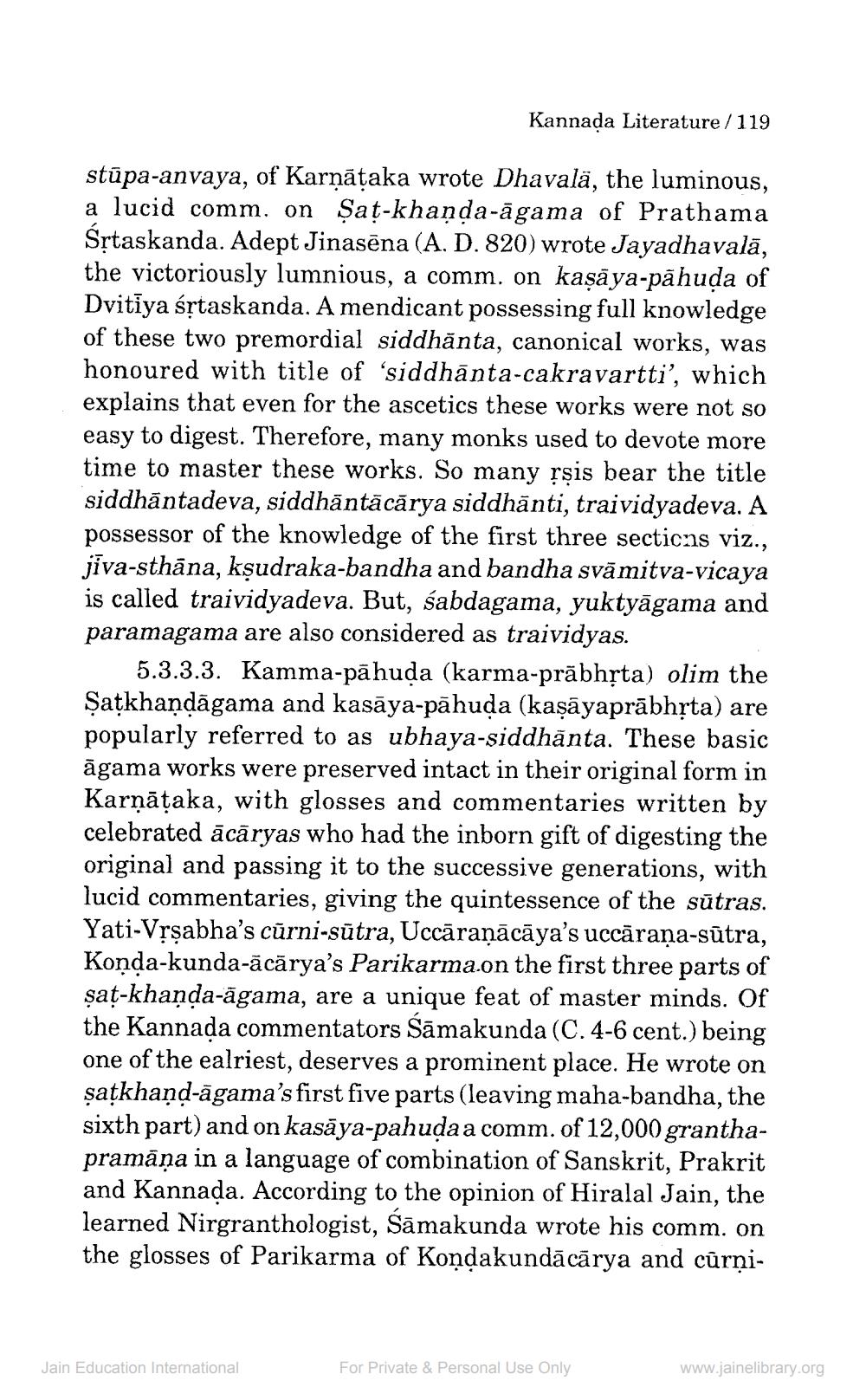________________
Kannada Literature / 119
stūpa-anvaya, of Karnataka wrote Dhavala, the luminous, a lucid comm. on Sat-khanda-agama of Prathama Śṛtaskanda. Adept Jinasēna (A. D. 820) wrote Jayadhavalā, the victoriously lumnious, a comm. on kaṣaya-pahuḍa of Dvitiya śṛtaskanda. A mendicant possessing full knowledge of these two premordial siddhanta, canonical works, was honoured with title of 'siddhanta-cakravartti', which explains that even for the ascetics these works were not so easy to digest. Therefore, many monks used to devote more time to master these works. So many ṛṣis bear the title siddhantadeva, siddhāntācārya siddhanti, traividyadeva. A possessor of the knowledge of the first three sections viz., jiva-sthāna, kṣudraka-bandha and bandha svāmitva-vicaya is called traividyadeva. But, śabdagama, yuktyāgama and paramagama are also considered as traividyas.
5.3.3.3. Kamma-pāhuḍa (karma-prabhṛta) olim the Satkhaṇḍāgama and kasāya-pāhuḍa (kaṣāyaprabhṛta) are popularly referred to as ubhaya-siddhanta. These basic agama works were preserved intact in their original form in Karṇāṭaka, with glosses and commentaries written by celebrated ācāryas who had the inborn gift of digesting the original and passing it to the successive generations, with lucid commentaries, giving the quintessence of the sutras. Yati-Vṛṣabha's curni-sutra, Uccaraṇācāya's uccāraṇa-sūtra, Konda-kunda-ācārya's Parikarma.on the first three parts of ṣaṭ-khaṇḍa-agama, are a unique feat of master minds. Of the Kannada commentators Samakunda (C. 4-6 cent.) being one of the ealriest, deserves a prominent place. He wrote on satkhand-agama's first five parts (leaving maha-bandha, the sixth part) and on kasaya-pahuḍa a comm. of 12,000 granthapramāņa in a language of combination of Sanskrit, Prakrit and Kannada. According to the opinion of Hiralal Jain, the learned Nirgranthologist, Samakunda wrote his comm. on the glosses of Parikarma of Kondakundācārya and cūrņi
Jain Education International
For Private & Personal Use Only
www.jainelibrary.org




